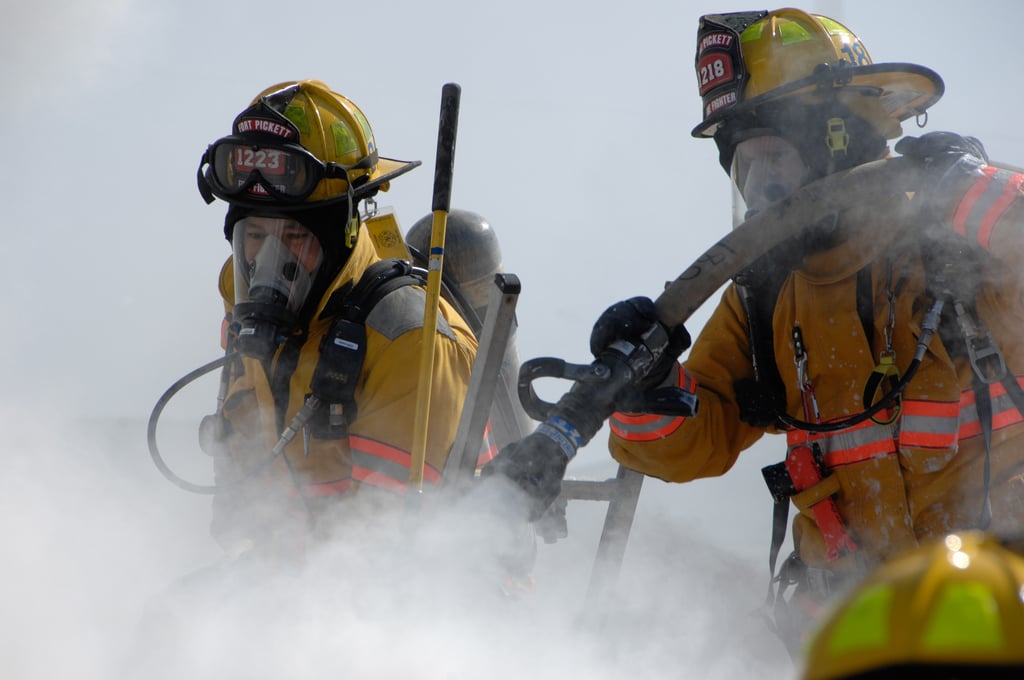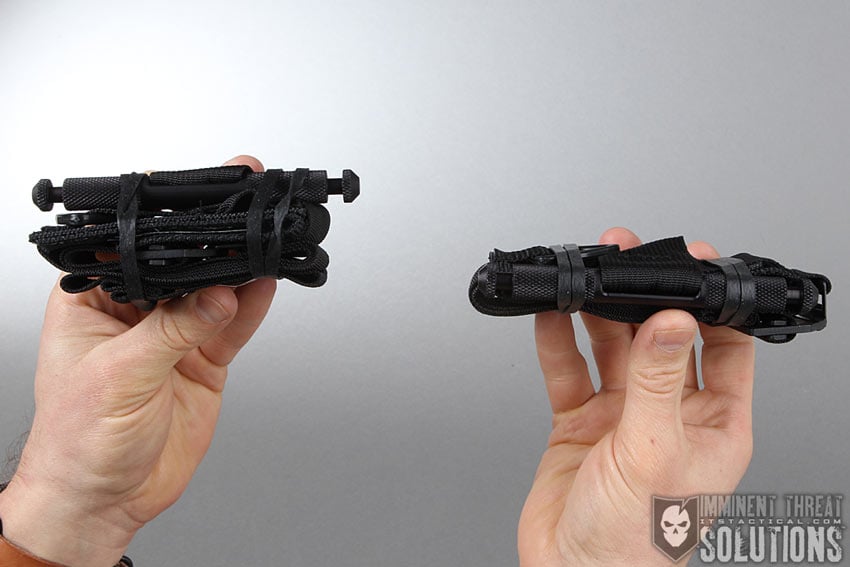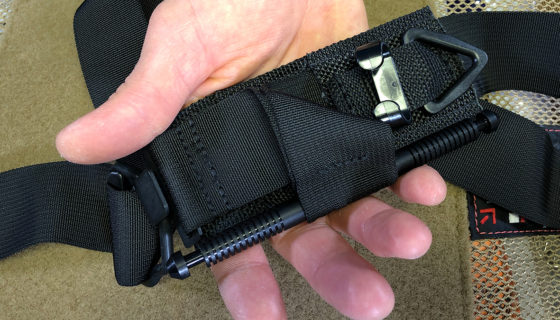Is Body Armor Truly Coming for EMS and Fire? TCCC and C-TECC Updates from SOMA 2013
Is Body Armor Truly Coming for EMS and Fire? TCCC and C-TECC Updates from SOMA 2013
This year I attended the SOMA Conference for the first time as an actual SOMA member. While I’ve been going to SOMA for the past three years, its always been limited to the Expo. There’s a lot of value in attending the Expo, but now I know the break out sessions are the true blood of the conference.
I would HIGHLY encourage anyone involved in “tactical medicine” to join SOMA. An added perk is that SOMA has joined forces with the Journal of Special Operations Medicine (JSOM) and all SOMA members will now receive the journal as part of your SOMA membership.
I’d like to point out I’m writing this article from my personal notes as I wanted to attend as a “first responder” and not in a direct media capacity. I wanted to be able to focus on the things I found important and not have the pressure of trying to “report” on what I saw there, so this article is a culmination of those shorthand notes. I take full responsibility for any errors that may come up as a result and encourage anyone who attended to address any corrections in the comments below.
TCCC / C-TECC updates
Since we want to get you the latest TCCC / C-TECC updates first, this article will cover changes to TCCC / C-TECC. The follow-up article will cover things I thought were interesting during the TEMS breakout sessions. There were a few SOF breakouts which would have been great to sit in on, but I wanted to stay in my lane and get the most out of the TEMS sessions.
TCCC December 2013 Updates
There are four main updates to the TCCC guidelines. While some of this may have been in the works and you may have seen them already, these updates were confirmed by LTC Mabry himself. Also new is that JSOM will now push all new TCCC information and updates.
*A quick edit that I wanted to add as of 12-21-13. The reason the TCCC guidelines have not been updated formally is that the person in charge of completing the updates has been “laid off” due to the sequestration. Until the funding comes back the December updates will not show up. I wanted to put that out there in case anyone is waiting around for something formal to present to your COC or other reasons.
- Vented chest seals are now recommended over non-vented. Knowing there may be times when a non-vented chest seal will be the only option, it’s recommended that the casualty be closely monitored for the development of a tension-pneumothorax.
- The restrictions on Tranexamic acid (TXA) have been removed and are now approved for everyone, not just SOF personnel.
- TCCC casualty cards will now be under a DOD number for access by all services: DD 1380. Link to the proposed card HERE.
- There is now a Triple-Option Analgesia plan. Since this didn’t relate to me and was pretty complex I didn’t take notes directly from the lecture. Here is a link to the changes which should be published shortly and the updates are as follows:
- The Meloxicam and Tylenol in the TCCC Combat Pill Pack are for casualties with relatively minor pain who are still able to function as effective combatants;
- Oral Transmucosal Fentanyl Citrate (OTFC) is for casualties who have moderate to severe pain, but who are not in hemorrhagic shock or respiratory distress and are not at significant risk for developing either condition; or
- Ketamine for casualties who have moderate to severe pain, but who are in hemorrhagic shock, respiratory distress or are at significant risk for developing either condition. Ketamine may also be used to increase analgesic effect for casualties who have previously been given opioids (Morphine or Fentanyl.)
C-TECC 2013 Updates
Dr. Dave Callaway discussed updates to what’s happening on the TEMS side of the house. Most of these were administrative in nature, but it’s important to know that there’s a big shift coming to get EMS and Fire personnel into the “hot zone” and setting up Rescue Task Force tactics, I’ll touch on that more later.
- There are now Homeland Security grants for TEMS related training and equipment. While some these may have been around for some time, the recent active shooter and bombings have brought this to the forefront. The trick (as always) with getting these funds is doing your research and figuring out how to access them.
- FEMA has a new Active Shooter document which talks about incorporating tactical medicine into active shooter events. This goes right along with other lectures during SOMA which talked about ways to get EMS and FD into the “hot zone.”
- The National Fire Protection Association (NFPA) Chiefs now support the Rescue Task Force (RTF) concept. From what Dr. Callaway was saying, this is a big deal as it talks about equipping FD personnel with body armor and sending them into the “warm and hot zones”, which has been almost unheard of up until now. Read the NFPA document Here. There’s a department in California that is actively looking to issue body armor and helmets to their firefighters/paramedics but the only holdback currently is funding.
- The International Association of Fire Fighters (IAFF) also recognizes the need for RTF concepts and has a written statement on it. Read the IAFF document Here.
- As some of you know the National Tactical Officers Association (NTOA) has a TEMS position statement. A keynote from this paper states “The revised position statement recognizes the need for all police officers to have basic TEMS medical training.” See the NTOA statement Here.
- Something that wasn’t in Dr. Callaway’s presentation was the International Association of Chiefs (IACP) of Police 2013 resolutions. The first thing on the list is getting all Police TEMS training. See the IACP resolutions Here.
- The Hartford Consensus 2. There are two links I’m going to provide on this and I highly encourage everyone to read each. This will be a huge help in getting tourniquets out to patrol level officers with the proper training. It will also help get EMS and FD personnel into the “hot zone” and not stage as they normally do.
- Active Shooter and Intentional Mass-Casualty Events: The Hartford Consensus II
- Stop the Bleeding! Hartford Consensus Group Issues a Call to Action at American College of Surgeons Clinical Congress to Reduce Death Toll among Mass-Casualty Victims in the U.S.
TECC Updates
Dr. Callaway also went over specific updates to the Adult TECC guidelines as follows:
- Hextend has been removed from recommendations.
- Additional emphasis placed on extraction and CPP management.
- Phases of care language streamlined.
- Tourniquet placement: Support most proximal placement (go high or die.)
For pediatric guidelines (JSOM Winter 2013):
- First of its kind.
- Based on TECC and existing trauma literature, but largely expert opinion.
- Defines existing best practice and outlines knowledge gaps.
TECC goals listed by Dr. Callaway:
- Expand pediatric TECC guidelines.
- Assist Federal efforts surrounding common operating language and guidelines Active Shooter and IED preparedness.
- Expand TECC training for LEO, schools and other first responders.
- Formalize relationships with:
- ACEP TEMS Section
- ACS COT
- IACP
- SOMA
- NASEMSO
For more information on TECC visit www.c-tecc.org and for current TECC guidelines go Here.
Stay tuned for the follow-up article with my thoughts on the TEMS break out sessions. Here’s a quick rundown of things I’ll be covering:
- Boston Bombing
- After Aurora
- Advanced Law Enforcement Rapid Response Training (ALERRT)
- Information on Rescue Task Force programs
- Sikh Temple shooting lessons learned
- National TEMS initiative
- Dignitary Medicine
- Watertown Manhunt
- London Bombing
Note: Please share all questions in the comments below, as I won’t be answering questions posted on social media.












Discussion